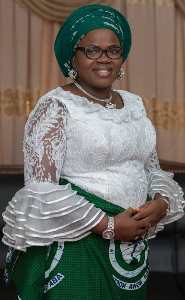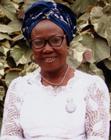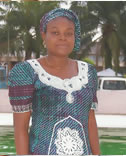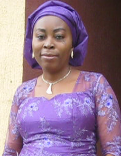MOTHERS' UNION
 Founded in 1876 by a Hampshire vicar's wife, Mary Sumner, and launched as a national organisation at the 1885 Church Congress, the Mothers’ Union (MU) had 500,000 members by 1939. By 2009, it had 3.6 million members in 78 countries. It was described by the Archbishop of Canterbury and Jane Williams as ‘the most influential and widespread lay movement in the churches of the [Anglican] Communion’. Historians have sometimes treated it as the antithesis of modern feminism, sometimes as an example of conservative feminism. But throughout the twentieth century its membership in the British Isles outnumbered those of the secular self-styled feminist organisations (though not the National Federation of Women's Institutes, which overtook it after the Second World War). In recent years the MU's appeal to women of the global South, and its relatively calm reaction to divisions among Anglicans regarding homosexuality, have raised its profile within the Church. Its archives are now in Lambeth Palace Library.
Founded in 1876 by a Hampshire vicar's wife, Mary Sumner, and launched as a national organisation at the 1885 Church Congress, the Mothers’ Union (MU) had 500,000 members by 1939. By 2009, it had 3.6 million members in 78 countries. It was described by the Archbishop of Canterbury and Jane Williams as ‘the most influential and widespread lay movement in the churches of the [Anglican] Communion’. Historians have sometimes treated it as the antithesis of modern feminism, sometimes as an example of conservative feminism. But throughout the twentieth century its membership in the British Isles outnumbered those of the secular self-styled feminist organisations (though not the National Federation of Women's Institutes, which overtook it after the Second World War). In recent years the MU's appeal to women of the global South, and its relatively calm reaction to divisions among Anglicans regarding homosexuality, have raised its profile within the Church. Its archives are now in Lambeth Palace Library.
The movement Mary Sumner envisaged was a fellowship for prayer and mutual support that brought together mothers of all social classes. It differed from the ‘mothers’ meetings’ that were already common within Anglican parishes in that these did not normally aim to include women of the educated classes, and often had a practical as well as a spiritual focus. Sumner's vision was shaped by her evangelical background and in her time the movement was by no means exclusively Anglican; meetings drew in nonconformists and in Scotland Presbyterians took the lead. But the MU was also shaped in its early years by the example of the Girls’ Friendly Society and designed to support its work of promoting ‘purity’ among young women. MU members had a card setting out the duties of Christian mothers, in language appropriate to their status as ‘subscribing’ or ‘cottage’ members.
The movement spread at first unevenly within the UK, often taking over existing church women's organisations, while colonial branches sprang up to cater for expatriate and army wives or in connection with missionary work among indigenous women. But at the turn of the century it acquired a centralised organisation, the Queen became a patron, and increasingly the MU took on an exclusively Anglican identity—becoming indeed the body that represented women within the established church. It did so most effectively in the liturgical domain. Never much influenced by theological or church party disputes, the MU promoted a more family-friendly pattern of worship, encouraging the practice of infant baptism and confirmation, parish communion services and the observance of Mothering Sunday. It created a new place for the Virgin Mary, carefully distanced from Roman Catholic doctrine, in mainstream Anglican sensibilities. The Feast of the Annunciation was chosen as the MU's annual day of prayer and Raphael's Sistine Madonna became its icon.
The MU's claim to represent Anglican women in their common vocation as mothers always rested on a conservative notion of ‘Christian womanliness’. Members of its central committee wore hats at their meetings at Mary Sumner House in Westminster into the 1970s. As a movement, it had a consistent record of ‘neutrality’ (often with a hostile flavour to it) towards progressive feminist causes, from women's suffrage to the ordination of women and from married women's work to contraception. It became associated above all with an implacable opposition to divorce, justified by the MU's mission to defend the Christian home and family, but going far beyond the official line of the Church of England. Mary Sumner would have liked to see the 1857 Act repealed. Whereas the Women's Co-operative Guild campaigned in the early twentieth century to extend women's access to divorce and the right to remarriage, the MU collected evidence to show that that was not what respectable working-class women really wanted. Divorce became an absolute disqualification for membership, as was marriage to a divorced man; and more than once efforts were made to repress dissenting opinion on this issue within the movement. It was an increasingly divisive policy, especially in the middle decades of the century when the Anglican hierarchy was moving towards a more liberal policy on marriage and divorce. But it was not until 1974 that the MU's constitution was amended to include among its objects ‘To help those whose family life has met with adversity’.
The Mothers' Union President of Aban Ngwa North Diocese is Princess Odionyenfe N.C. Kanu (pictured above), the wife of the Diocesan Bishop of Aba Ngwa North Anglican Diocese. [See here for further info on Mothers' Union Worldwide]
MOTHERS’ UNION PRAYER
ALMIGHTY GOD, our heavenly Father, who gave marriage to be a source of blessing, we thank you for family life, with all its joys and sorrows.
May we know your presence and peace in our homes, fill them with your love and use them to your glory.
Bless all who are married and every parent and child. Pour out upon us your Holy Spirit, that we may truly love and serve you.
Bless the members of the Mothers’ Union throughout the world, unite us in prayer and worship, in love and service, that, strengthened by your grace, we may seek to do your will; through Jesus Christ, our Lord. Amen.


